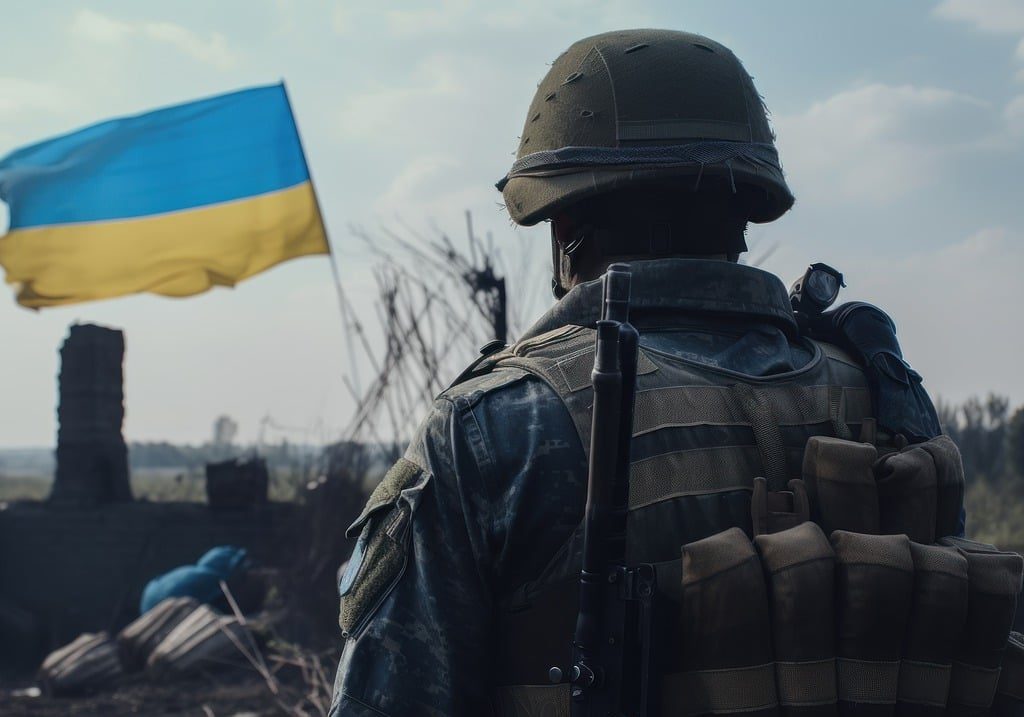Ukraine’s recent incursion into Russia’s Kursk region has been a surprising success, leaving Moscow scrambling to respond. With Ukrainian forces occupying an estimated 800 square kilometers of Russian territory, according to the U.S.-based Institute for the Study of War (ISW), the operation has not only caught the Kremlin off guard but also highlighted vulnerabilities in Russia’s defenses. However, analysts now wonder what Kyiv intends to do with this newly captured territory and how it plans to respond to the inevitable Russian counteroffensive.
The attack has undoubtedly rattled Moscow. The Kursk region, with its limited military presence, was a soft target, and Ukraine’s ability to exploit this weakness has been a clear demonstration of its tactical prowess. Yet, despite the initial success, the advance raises critical questions about Ukraine’s next steps. With the Kremlin rushing reinforcements to the area, it’s only a matter of time before Ukrainian forces face a significant Russian counterattack.
“It will take the Russians some time to build up an assault force in the area, perhaps a few weeks,” commented Dick Zandee, a defense expert at the Clingendael Institute. “Ukraine, however, is unlikely to advance much further. But that doesn’t mean they should withdraw immediately, as doing so would undermine the morale boost and the political humiliation inflicted on Putin.”
Zandee suggests that Ukraine will soon face a dilemma: either commit substantial forces to defend the territory or risk stretching its resources too thin, particularly on other fronts like the Donbas. “Diverting reinforcements from the Donbas to Kursk would weaken their defenses there, which is too risky,” he explains. “Militarily, their advance could result in a stalemate until Russian forces are ready to counterattack.”
This situation leaves Ukraine with tough choices. Should Kyiv opt for a tactical withdrawal to preserve its military strength, or does it see strategic value in holding onto the captured territory? Kyiv has made it clear that it does not intend to permanently occupy Russian territory. According to Ukraine’s Foreign Ministry, the operation was intended to prevent future Russian attacks from that area, not to claim it for Ukraine.
Speculation has also emerged about whether Ukraine might use this territorial gain as leverage in potential negotiations. However, Zandee remains skeptical of this strategy’s effectiveness: “A 1,000-square-kilometer area is insignificant compared to the vast territory Russia controls from Kherson to the east. Ukraine doesn’t have a strong negotiating position based on this alone.”
Kyiv’s next moves in Kursk remain shrouded in secrecy, likely to keep Russian forces guessing. However, Zandee suggests that the mixed messages coming from Kyiv indicate a lack of a clear strategy. “We’re hearing a mix of arguments that don’t give away what the actual plan is,” he says. “Ukraine’s Foreign Ministry says they have no business on Russian territory and won’t stay there, while military officials talk about defending themselves on Russian soil. There are also reports of trench construction, which adds to the confusion.”
Zandee speculates that Ukraine may not have fully thought through a contingency plan. “This isn’t the first time Ukraine has made tactical errors on the battlefield,” he notes. “In Avdiivka, they delayed their retreat and nearly got surrounded. This has happened in other places too, especially early in the war.”
Animated map of Ukraine's Kursk offensive (August 6 – 22) pic.twitter.com/v9AEu8swdd
— Tarmo 🇨🇿 🇺🇦 🇫🇮 🇪🇺 (@TarmoFella) August 23, 2024
There’s also concern that Ukrainian forces could make tactical missteps in Kursk, potentially leading to encirclement and the capture of troops. “There’s still a lot of tension between senior commanders, who often favor a Soviet-style fight-to-the-last-man approach, and lower tactical commanders, who have received Western training focused on mobile warfare and strategic retreats,” says Zandee. “This conflict of strategies has led to mistakes before.”
If Ukraine maintains its position in Kursk for a few more weeks, it could face additional threats from Russian missile and artillery strikes on its supply lines and assembly points. “Ukraine will also need to establish a solid defense along the border,” Zandee warns. “Once the Russians build up their forces, they might try to push through, creating another set of challenges for Kyiv.”
Meanwhile, Russian troop movements are being reported in southern Ukraine’s Zaporizhzhya and Kherson regions, as well as in Russia’s Kaliningrad enclave. However, Zandee does not anticipate significant changes on Ukraine’s eastern front in the Donbas. “The Russians will be careful not to weaken their positions in the Donbas, as any gaps could be exploited by Ukrainian forces, as we’ve seen before,” he says. “When the Russians were weakened south of Kharkiv at the beginning of the war, Ukraine immediately took advantage of it.”
Currently, the frontline situation in the Donetsk region remains unchanged. Russian forces have resumed attacks near Pokrovsk and are reportedly advancing toward Toretsk. Despite Ukraine’s operation in Kursk, Russia still holds the upper hand on the ground. However, Kyiv’s incursion has at least prevented Russia from moving additional units and equipment into the Donetsk oblast, according to the Ukrainian Foreign Ministry.
As the situation unfolds, Ukraine’s ability to navigate these challenges will be crucial. The Kursk operation has been a tactical success, but its long-term impact will depend on Kyiv’s next moves and its ability to withstand the Russian response.
Recent Russian advances in the Pokrovsk direction appear to have prompted Ukrainian withdrawals from limited positions southeast of Pokrovsk, and Russian forces have likely failed to achieve their apparent objective of tactically encircling Ukrainian forces in the area. https://t.co/wRDQIhvgLr pic.twitter.com/IU36vlF2CN
— Institute for the Study of War (@TheStudyofWar) August 23, 2024

